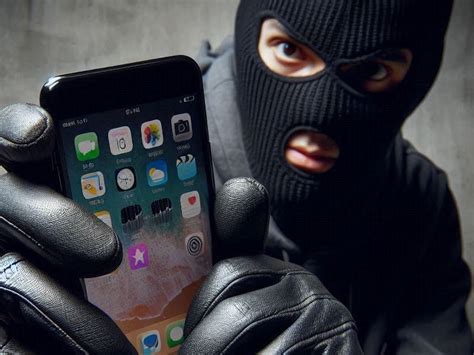
A New York City woman discovered a cell phone buried in the ground near her apartment building, raising concerns about a potentially novel surveillance tactic employed by thieves or individuals with malicious intent.
The incident occurred in Manhattan, where the woman, identified only as Sarah, stumbled upon the phone while walking her dog. “I was walking my dog, and he started sniffing at something in the ground,” Sarah told local news outlets. “I thought it was just some trash, but when I dug it up, it was a phone wrapped in plastic.” The phone was buried just a few inches below the surface and encased in a plastic bag, presumably to protect it from the elements.
Upon discovering the device, Sarah contacted the New York Police Department (NYPD), who are now investigating the incident. Authorities are examining the phone’s data, including its call logs, location history, and any stored media, to determine its purpose and identify potential suspects. The NYPD has not yet released any official statements regarding the ongoing investigation.
The discovery has prompted widespread speculation about the potential motives behind burying a phone. One prevailing theory is that it could be a new method for thieves to track potential victims or monitor their movements. By burying a phone near a target’s residence or workplace, perpetrators could potentially gather valuable information about their routines, vulnerabilities, and habits, making them easier to target for theft or other crimes.
Security experts have weighed in on the incident, highlighting the potential risks associated with such surveillance tactics. “Burying a phone allows someone to remotely monitor an area without being physically present,” explained cybersecurity analyst Mark Thompson. “They could use the phone’s microphone to eavesdrop on conversations, track movement patterns via GPS, or even activate the camera to record video footage.”
The incident also raises broader concerns about privacy and the increasing sophistication of surveillance technology. As smartphones become more ubiquitous and powerful, they also present new opportunities for malicious actors to exploit them for nefarious purposes. Law enforcement agencies and cybersecurity experts are working to stay ahead of these evolving threats and develop strategies to protect individuals from these types of surveillance tactics.
The discovery of the buried phone in Manhattan serves as a stark reminder of the importance of vigilance and awareness in an increasingly interconnected world. Individuals are encouraged to report any suspicious activity to the authorities and to take steps to protect their privacy and security online and offline.
Further Investigation and Analysis
The NYPD’s investigation into the buried phone is multifaceted. Digital forensics experts are meticulously analyzing the phone’s data to uncover any clues about its owner and intended use. This includes examining:
- Call Logs and Contacts: To identify any frequently called numbers or contacts that could lead to the owner.
- Location History: To trace the phone’s movements prior to being buried and identify any patterns or significant locations.
- Installed Apps: To determine if any surveillance or tracking apps were installed on the device.
- Stored Media: To search for any photos, videos, or audio recordings that could provide insights into the phone’s purpose.
- Network Connections: To identify any Wi-Fi networks or cellular towers the phone connected to, which could help pinpoint its location and usage patterns.
Authorities are also exploring the possibility that the phone was used for other illicit activities, such as drug trafficking or organized crime. The phone’s data could potentially provide valuable leads in ongoing investigations or uncover new criminal networks.
Expert Opinions on Surveillance Tactics
Security experts have emphasized the potential versatility of a buried phone as a surveillance tool. By leveraging the phone’s various features, perpetrators could potentially gather a wide range of information about their targets.
-
Audio Surveillance: The phone’s microphone could be remotely activated to eavesdrop on conversations within a certain radius. This could be used to gather sensitive information about a target’s plans, relationships, or financial situation.
-
Location Tracking: The phone’s GPS capabilities could be used to track a target’s movements in real-time. This could be used to monitor their daily routines, identify their frequented locations, or even track their travel plans.
-
Video Surveillance: The phone’s camera could be remotely activated to record video footage of the surrounding area. This could be used to monitor a target’s activities, capture their interactions with others, or even gather evidence of criminal activity.
-
Data Interception: In some cases, it might be possible to intercept data transmitted over the phone’s network connection. This could include emails, text messages, or even login credentials for online accounts.
Cybersecurity experts recommend that individuals take steps to protect their privacy and security against such surveillance tactics. This includes:
- Being aware of your surroundings: Pay attention to any suspicious objects or activities in your vicinity.
- Securing your devices: Use strong passwords, enable two-factor authentication, and keep your software up to date.
- Reviewing app permissions: Be mindful of the permissions you grant to apps on your phone, and revoke any permissions that are not necessary.
- Using a VPN: A virtual private network (VPN) can encrypt your internet traffic and protect your privacy when using public Wi-Fi networks.
- Covering your webcam: Use a physical cover to block your webcam when it is not in use, to prevent unauthorized access.
Legal Implications and Privacy Concerns
The discovery of the buried phone raises significant legal and ethical concerns about privacy and surveillance. In the United States, laws such as the Fourth Amendment to the Constitution protect individuals from unreasonable searches and seizures. However, these protections may not always apply to surveillance activities conducted by private individuals.
The use of hidden cameras or recording devices to monitor individuals without their consent may violate state and federal laws, depending on the specific circumstances. For example, it is generally illegal to record conversations in which you are not a participant without the consent of at least one party.
The Electronic Communications Privacy Act (ECPA) prohibits the interception of electronic communications, including phone calls, emails, and text messages. However, there are exceptions to this law, such as when a party to the communication consents to the interception.
The legal implications of burying a phone for surveillance purposes are complex and depend on a variety of factors, including the location of the phone, the type of data being collected, and the intent of the person who buried the phone. Individuals who engage in such activities could face criminal charges or civil lawsuits.
The Broader Context of Surveillance Technology
The incident in Manhattan highlights the growing prevalence of surveillance technology in modern society. From CCTV cameras to facial recognition software, surveillance technologies are becoming increasingly sophisticated and ubiquitous.
While these technologies can be used for legitimate purposes, such as crime prevention and public safety, they also raise concerns about privacy, civil liberties, and the potential for abuse.
In recent years, there has been increasing scrutiny of government surveillance programs, such as those conducted by the National Security Agency (NSA). Critics argue that these programs violate individuals’ privacy rights and lack sufficient oversight.
The use of surveillance technology by private companies is also raising concerns. Many companies collect vast amounts of data about their users, which can be used for targeted advertising, personalized pricing, or even discriminatory practices.
The debate over surveillance technology is likely to continue as these technologies become more advanced and widespread. It is important to strike a balance between the need for security and the protection of individual privacy rights.
Preventive Measures and Safety Tips
To mitigate the risk of becoming a victim of surveillance tactics such as the buried phone, individuals can take several preventive measures and adhere to certain safety tips:
- Be Aware of Your Surroundings: Pay close attention to your environment and be mindful of any unusual or suspicious objects or activities. If you notice something that seems out of place, report it to the authorities.
- Secure Your Home and Property: Install security cameras, motion detectors, and alarm systems to deter potential intruders. Ensure that your doors and windows are properly locked and secured.
- Protect Your Personal Information: Be cautious about sharing personal information online or with strangers. Shred sensitive documents and be wary of phishing scams.
- Use Strong Passwords and Enable Two-Factor Authentication: Protect your online accounts with strong, unique passwords and enable two-factor authentication whenever possible. This adds an extra layer of security to your accounts.
- Review App Permissions: Regularly review the permissions that you have granted to apps on your smartphone and revoke any permissions that are not necessary.
- Use a VPN When Using Public Wi-Fi: When using public Wi-Fi networks, use a virtual private network (VPN) to encrypt your internet traffic and protect your privacy.
- Cover Your Webcam When Not in Use: Use a physical cover to block your webcam when it is not in use to prevent unauthorized access.
- Update Your Software Regularly: Keep your operating system, web browser, and other software up to date with the latest security patches.
- Report Suspicious Activity: If you suspect that you are being targeted by surveillance, report it to the authorities immediately.
The Role of Technology in Modern Crime
The buried phone incident is a prime example of how technology is increasingly being used in modern crime. Perpetrators are constantly finding new ways to exploit technological advancements to commit crimes and evade detection.
From phishing scams to ransomware attacks, cybercrime is becoming more sophisticated and prevalent. Criminals are using technology to steal financial information, intellectual property, and personal data.
The use of drones for surveillance and illegal activities is also on the rise. Drones can be used to smuggle drugs, monitor targets, or even deliver weapons.
Law enforcement agencies are working to keep pace with these evolving threats by investing in new technologies and training officers to combat cybercrime and other technology-related offenses.
The fight against technology-enabled crime requires a collaborative effort between law enforcement, cybersecurity experts, and individuals. By working together, we can protect ourselves from these threats and create a safer and more secure society.
Conclusion
The discovery of the buried phone in Manhattan serves as a wake-up call about the potential for technology to be used for malicious purposes. While the investigation is ongoing, the incident highlights the importance of vigilance, awareness, and proactive measures to protect our privacy and security. As technology continues to evolve, it is crucial that we stay informed about the latest threats and take steps to mitigate our risks. The convergence of technology and criminal intent requires continuous adaptation and proactive security measures from individuals, businesses, and law enforcement agencies alike. Ultimately, a comprehensive approach that combines technological solutions, legal frameworks, and heightened public awareness is necessary to address the challenges posed by modern surveillance tactics and ensure a safer and more secure environment for all. The incident should encourage ongoing conversations about privacy, security, and the ethical implications of emerging technologies in urban environments. The balance between innovation and protection remains a critical consideration as technology continues to advance.
Frequently Asked Questions (FAQ)
1. What exactly was found buried in the ground?
A cell phone encased in a plastic bag was found buried a few inches below the surface in the ground near an apartment building in Manhattan.
2. Why is the discovery of the buried phone concerning?
The discovery raises concerns because it suggests a potential new surveillance tactic, where a phone is buried to remotely monitor an area, track movements, record audio/video, or intercept data without being physically present. This could be used for theft, stalking, or other malicious purposes.
3. What are the police doing to investigate the incident?
The NYPD is investigating the incident by analyzing the phone’s data, including call logs, location history, installed apps, stored media, and network connections, to determine its purpose, identify potential suspects, and uncover any illicit activities.
4. What can individuals do to protect themselves from similar surveillance tactics?
Individuals can protect themselves by being aware of their surroundings, securing their devices with strong passwords and two-factor authentication, reviewing app permissions, using a VPN on public Wi-Fi, covering their webcams, updating software regularly, and reporting any suspicious activity to the authorities.
5. What are the legal implications of burying a phone for surveillance purposes?
The legal implications are complex and depend on the specific circumstances, including the location of the phone, the type of data being collected, and the intent of the person who buried the phone. Individuals who engage in such activities could face criminal charges or civil lawsuits for violating privacy laws, such as the Fourth Amendment, the Electronic Communications Privacy Act (ECPA), and state laws regarding illegal surveillance.
6. How could the buried phone be used for surveillance?
The buried phone could be used for a variety of surveillance purposes, including:
- Audio Surveillance: Remotely activating the phone’s microphone to eavesdrop on conversations.
- Location Tracking: Using the phone’s GPS to track a target’s movements in real-time.
- Video Surveillance: Remotely activating the phone’s camera to record video footage.
- Data Interception: Potentially intercepting data transmitted over the phone’s network connection, such as emails and text messages.
7. Has the NYPD released any information about the owner of the phone?
As of the latest reports, the NYPD has not released any official statements regarding the identity of the phone’s owner or any suspects in the case. The investigation is ongoing.
8. Is this a common tactic used by criminals?
While it’s difficult to determine how common this tactic is, security experts suggest it’s a relatively novel approach. The incident highlights the evolving sophistication of surveillance methods and the need for increased awareness.
9. What should I do if I find a suspicious device buried near my home or workplace?
If you find a suspicious device buried near your home or workplace, do not touch it. Immediately contact the local police department and report your findings. Provide them with the exact location and a description of the device.
10. Are there any specific apps that people should be wary of regarding potential surveillance?
While there aren’t specific apps that are inherently dangerous, be wary of any apps that request excessive permissions, such as access to your microphone, camera, location, and contacts, without a clear and justifiable reason. Research apps before downloading them and read reviews to check for any red flags. Also, regularly review the permissions granted to existing apps on your phone.
11. How does this incident highlight the broader issue of privacy in the digital age?
This incident underscores the increasing challenges to privacy in the digital age. As technology becomes more integrated into our daily lives, the potential for surveillance, both by governments and individuals, grows. It highlights the importance of understanding how technology can be used to monitor our activities and taking proactive steps to protect our personal information and privacy.
12. What are some of the ethical concerns raised by this incident?
The ethical concerns include the potential violation of privacy rights, the lack of consent for surveillance, and the potential for misuse of collected data. Even if the phone was buried with good intentions (which is unlikely), the act of monitoring someone without their knowledge or permission raises significant ethical questions.
13. Does this incident suggest a need for updated laws or regulations regarding surveillance technology?
This incident could prompt discussions about the need for updated laws and regulations regarding surveillance technology. Current laws may not adequately address the evolving methods used for surveillance, and there may be a need for clearer guidelines on the use of technology for monitoring purposes, especially by private individuals.
14. How might this incident affect public trust in technology?
This incident might erode public trust in technology, as it demonstrates how technology can be used for malicious purposes and raises concerns about the potential for surveillance. It underscores the importance of responsible development and use of technology, as well as increased transparency and accountability.
15. Are there any specific signs that someone might be under surveillance?
It can be challenging to determine if someone is under surveillance, but some signs might include:
- Unexplained noises or clicks during phone calls.
- Unusual activity on your phone or computer.
- Suspicious vehicles or individuals repeatedly seen near your home or workplace.
- Evidence of someone having accessed your property or belongings without your permission.
- Changes in your online accounts or financial information.
16. What steps can be taken to increase public awareness about potential surveillance threats?
Increasing public awareness can involve:
- Educational campaigns about surveillance risks and preventative measures.
- Workshops and seminars on cybersecurity and privacy.
- Media coverage of surveillance incidents and related legal issues.
- Collaboration between law enforcement, cybersecurity experts, and community organizations to disseminate information.
17. How can businesses protect themselves from similar surveillance tactics being used against them?
Businesses can protect themselves by:
- Conducting regular security audits of their premises and networks.
- Installing security cameras and alarm systems.
- Implementing employee training programs on security awareness.
- Monitoring their networks for unusual activity.
- Securing their Wi-Fi networks with strong passwords.
- Being vigilant about physical and electronic access to their facilities and data.
18. What resources are available for individuals who suspect they are being surveilled?
Individuals who suspect they are being surveilled can seek assistance from:
- Local law enforcement agencies.
- Cybersecurity experts.
- Privacy advocacy groups.
- Legal professionals specializing in privacy law.
19. How might the use of AI and machine learning affect future surveillance tactics?
AI and machine learning could significantly enhance future surveillance tactics by:
- Automating the analysis of large amounts of data collected through surveillance.
- Improving facial recognition and tracking capabilities.
- Predicting potential targets or threats based on data patterns.
- Creating more sophisticated and difficult-to-detect surveillance methods.
20. What is the overall takeaway from this incident?
The overall takeaway is that surveillance tactics are becoming increasingly sophisticated and that individuals need to be vigilant about protecting their privacy and security. This incident highlights the importance of being aware of your surroundings, securing your devices and online accounts, and reporting any suspicious activity to the authorities. It also underscores the need for ongoing discussions about privacy, security, and the ethical implications of emerging technologies.









